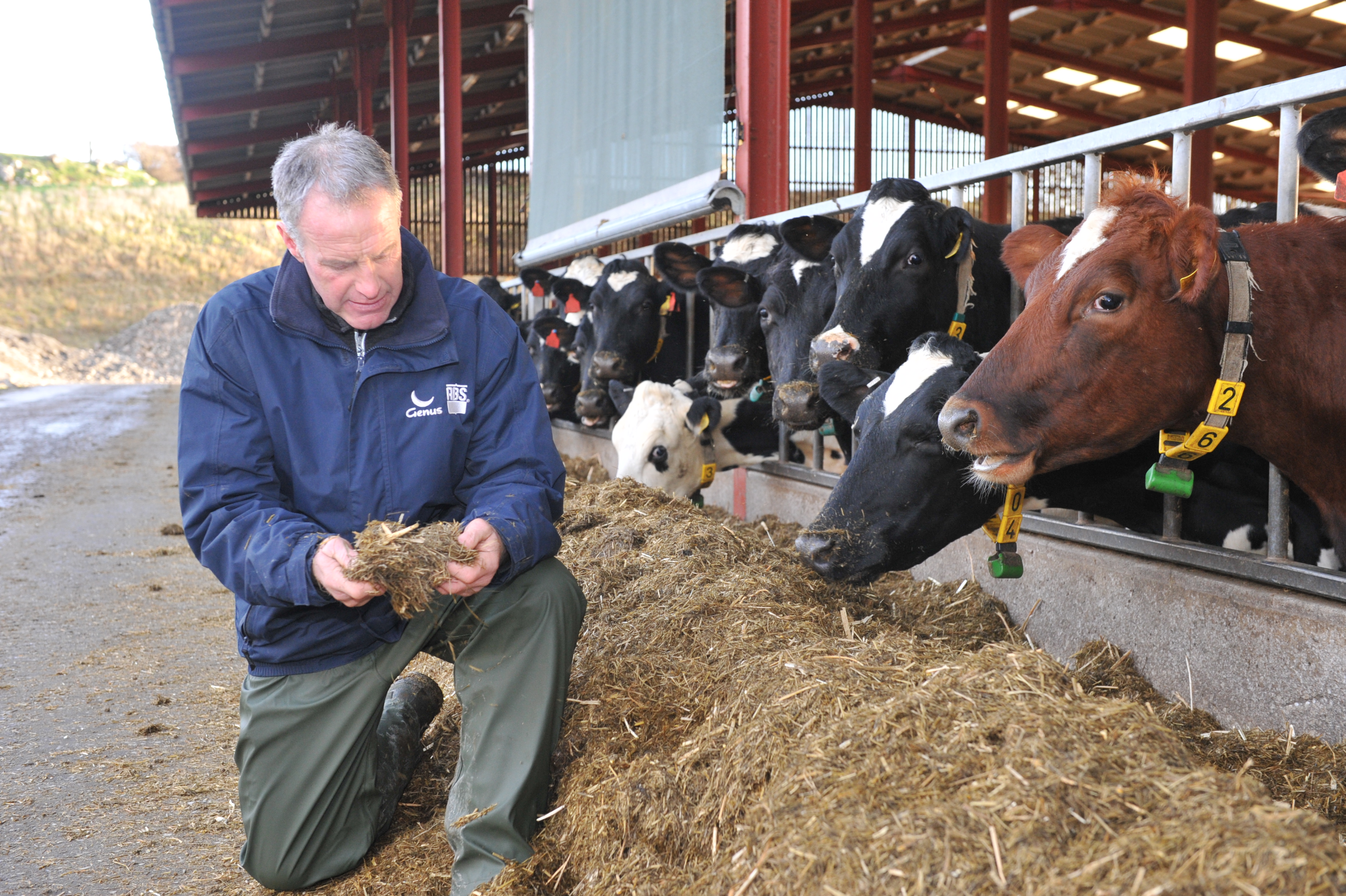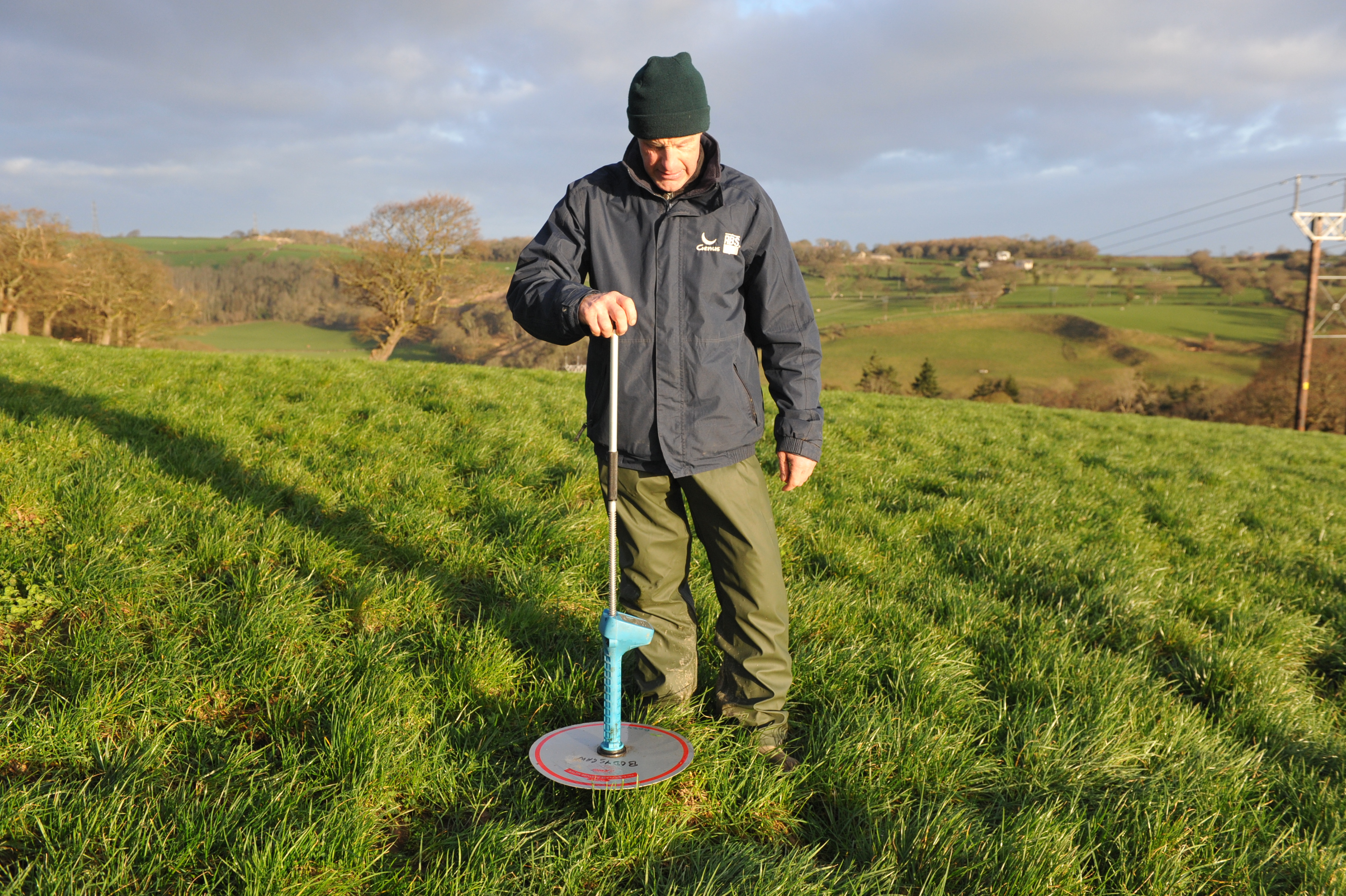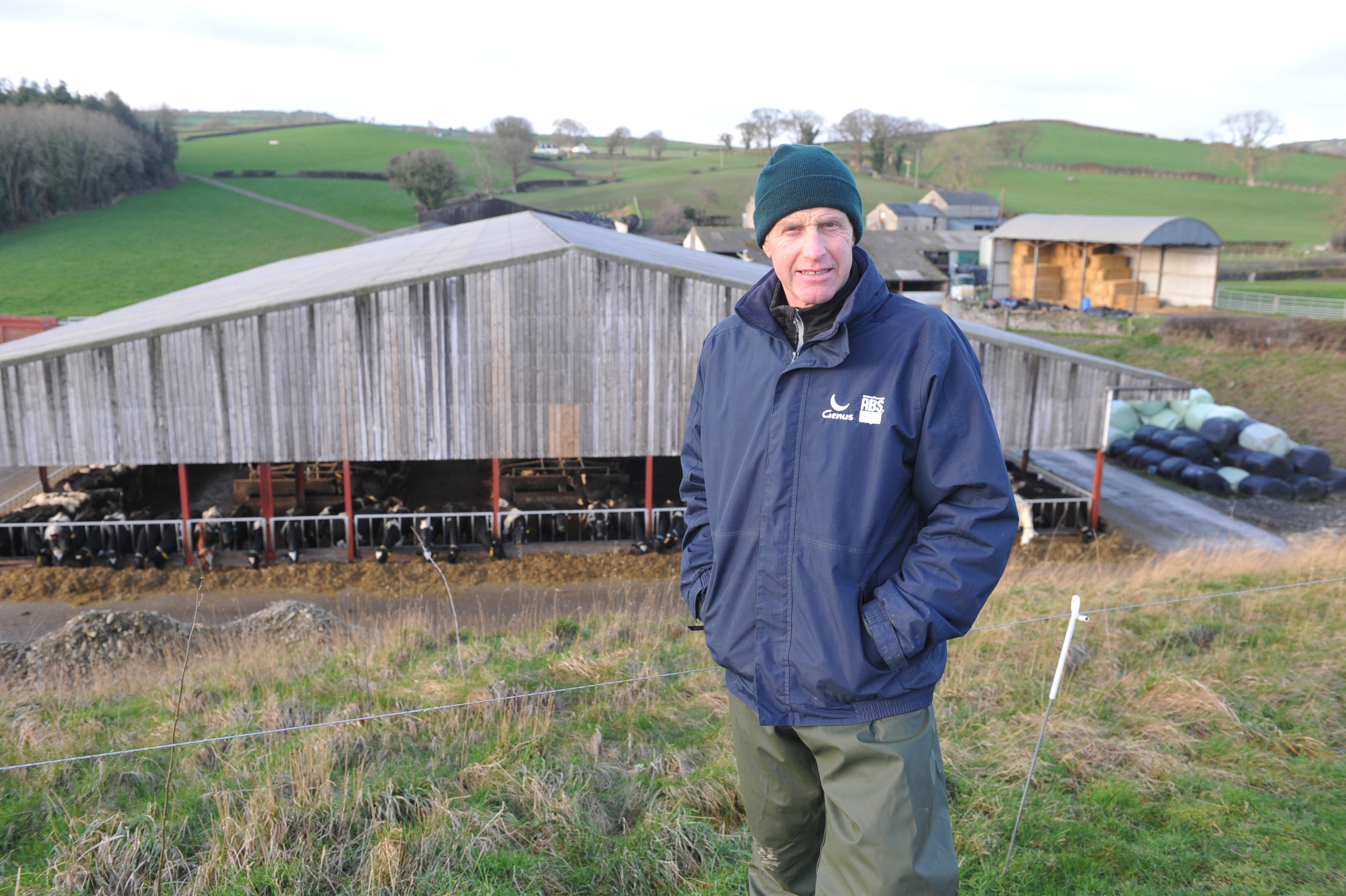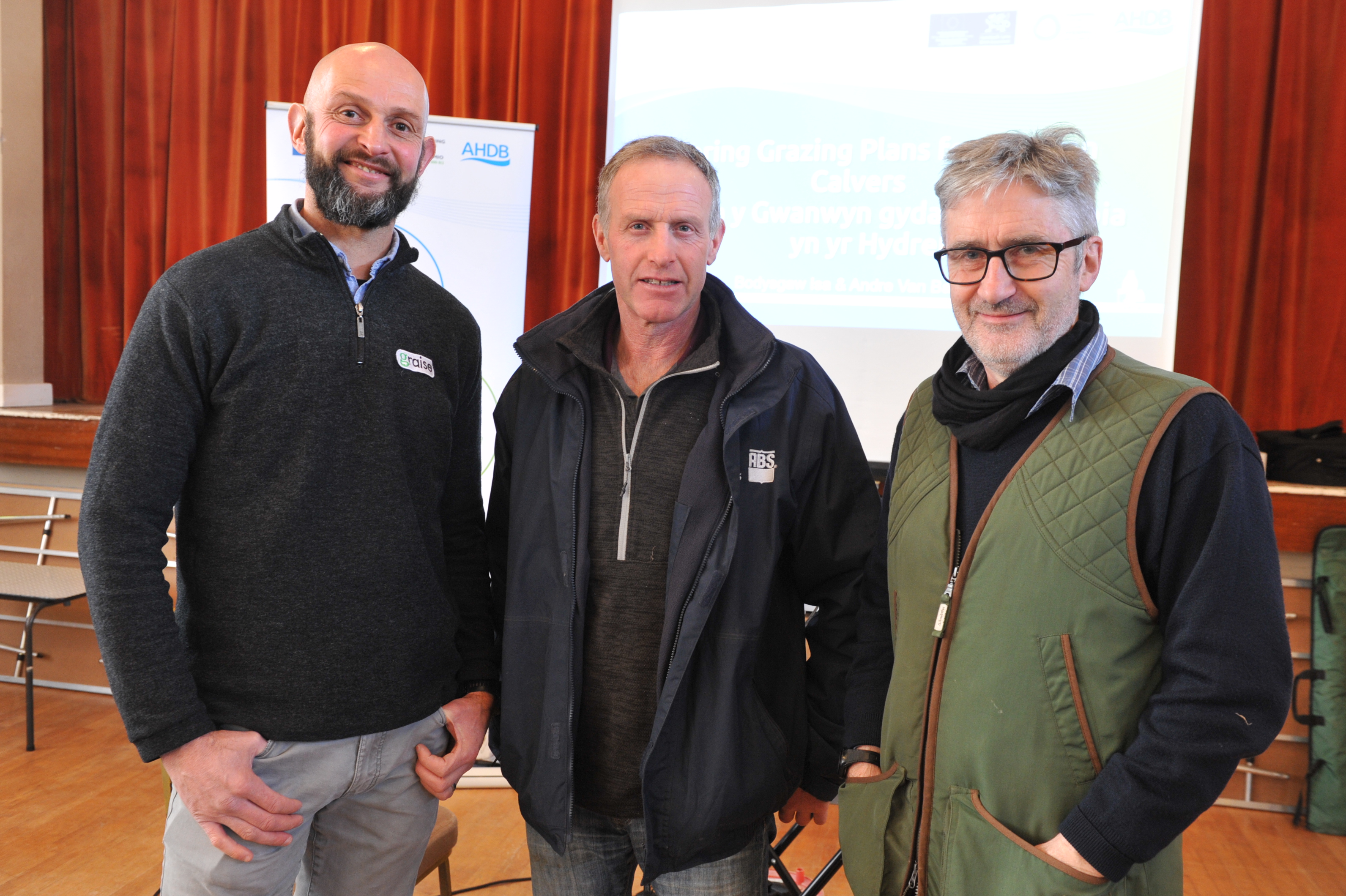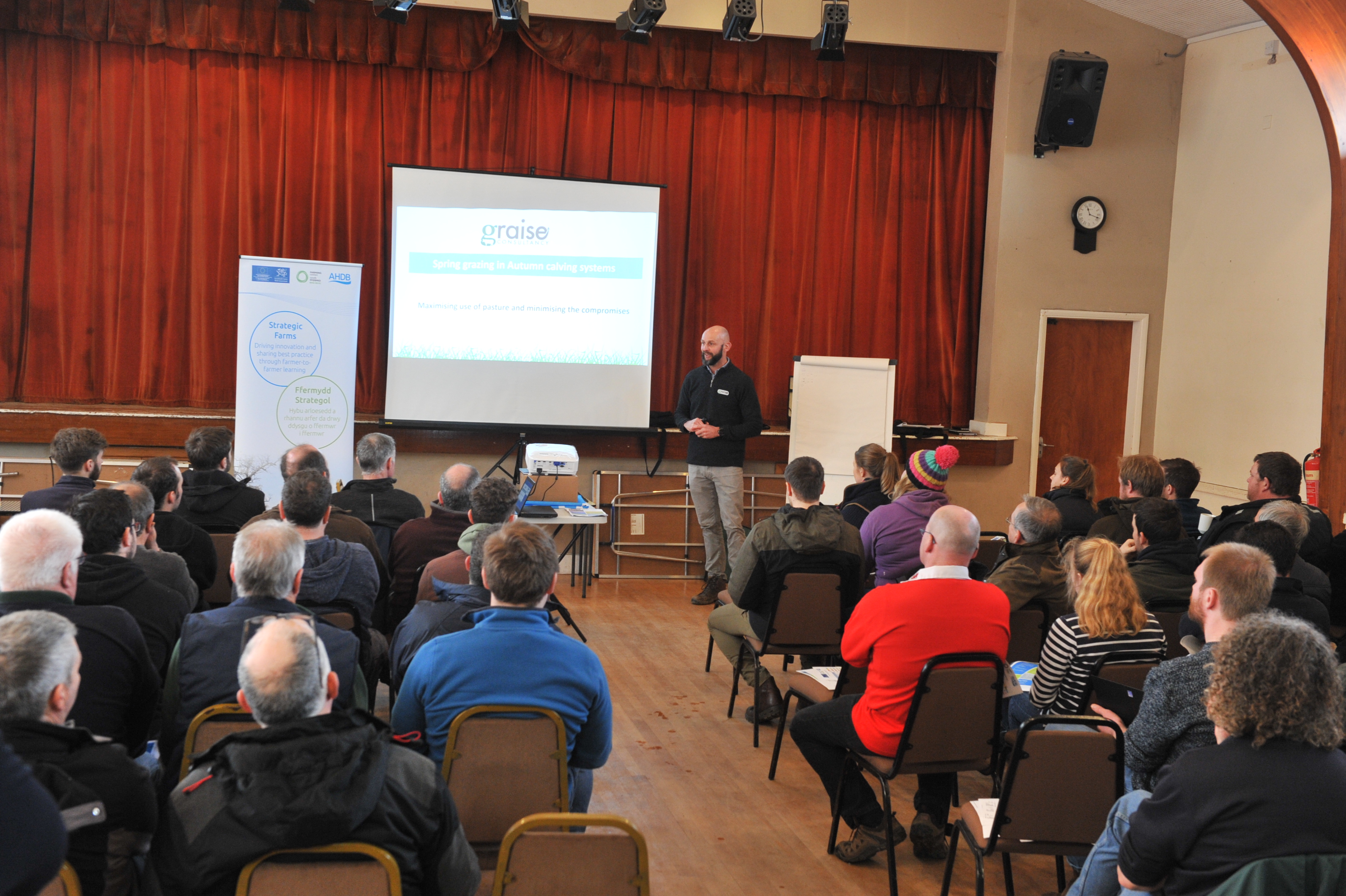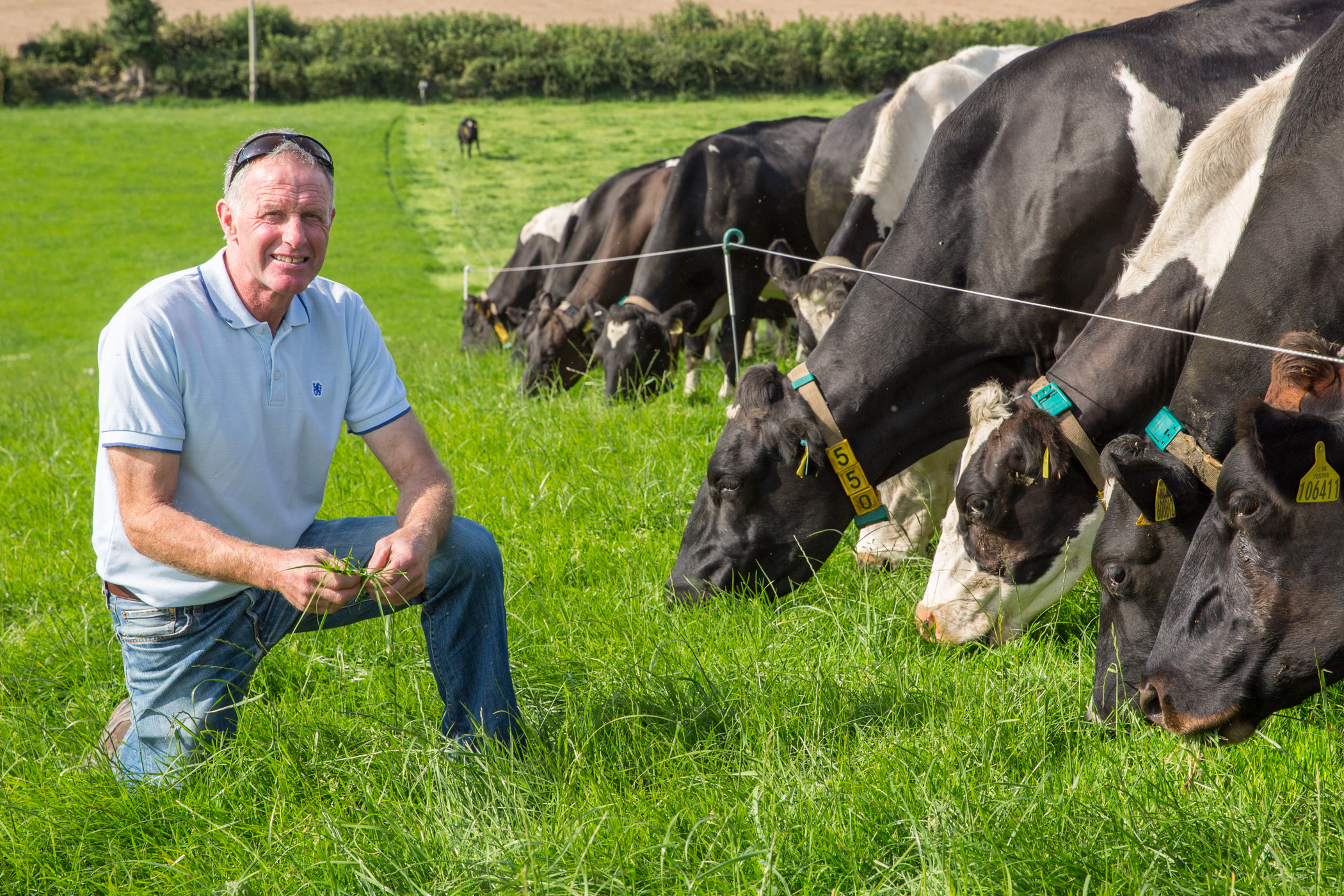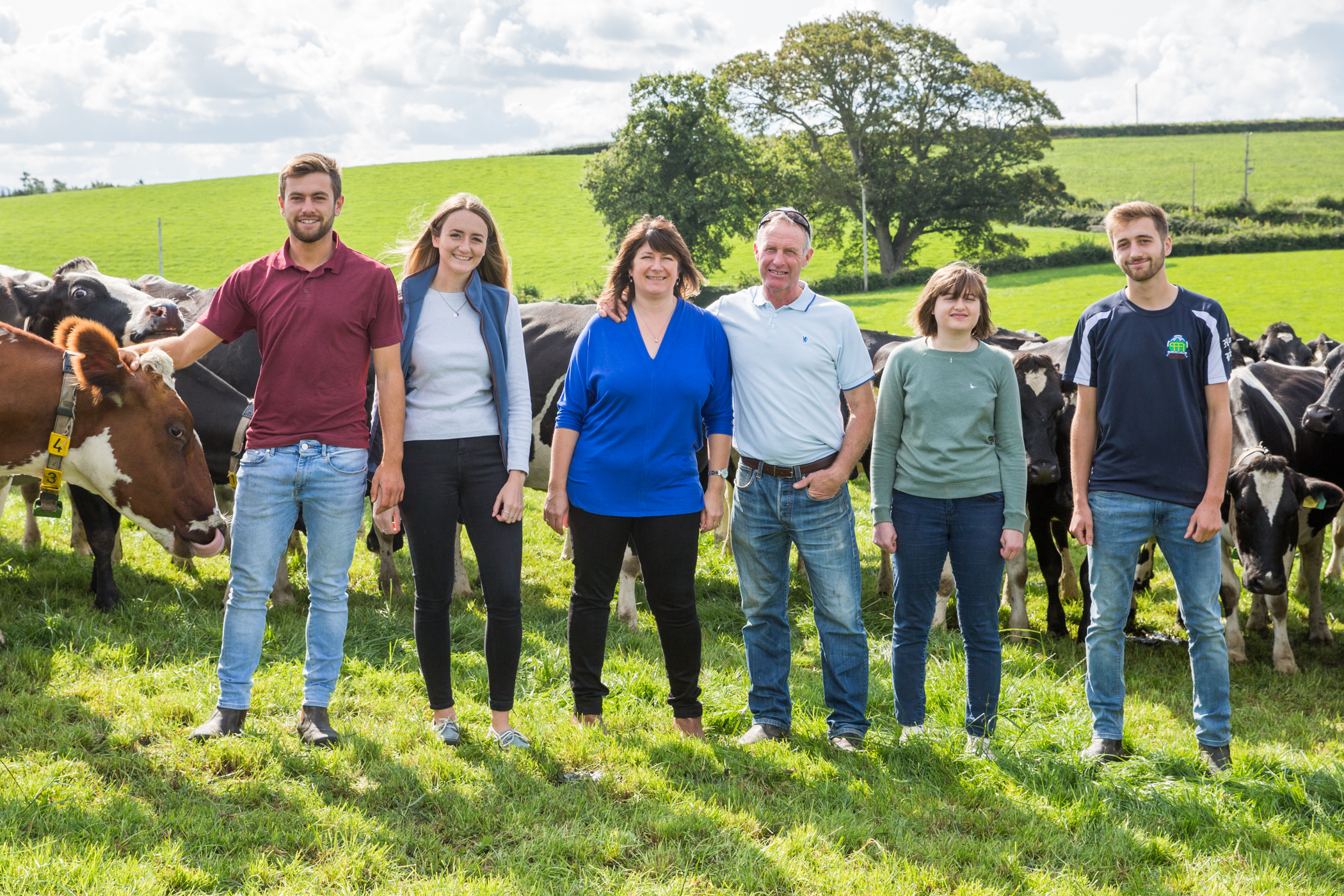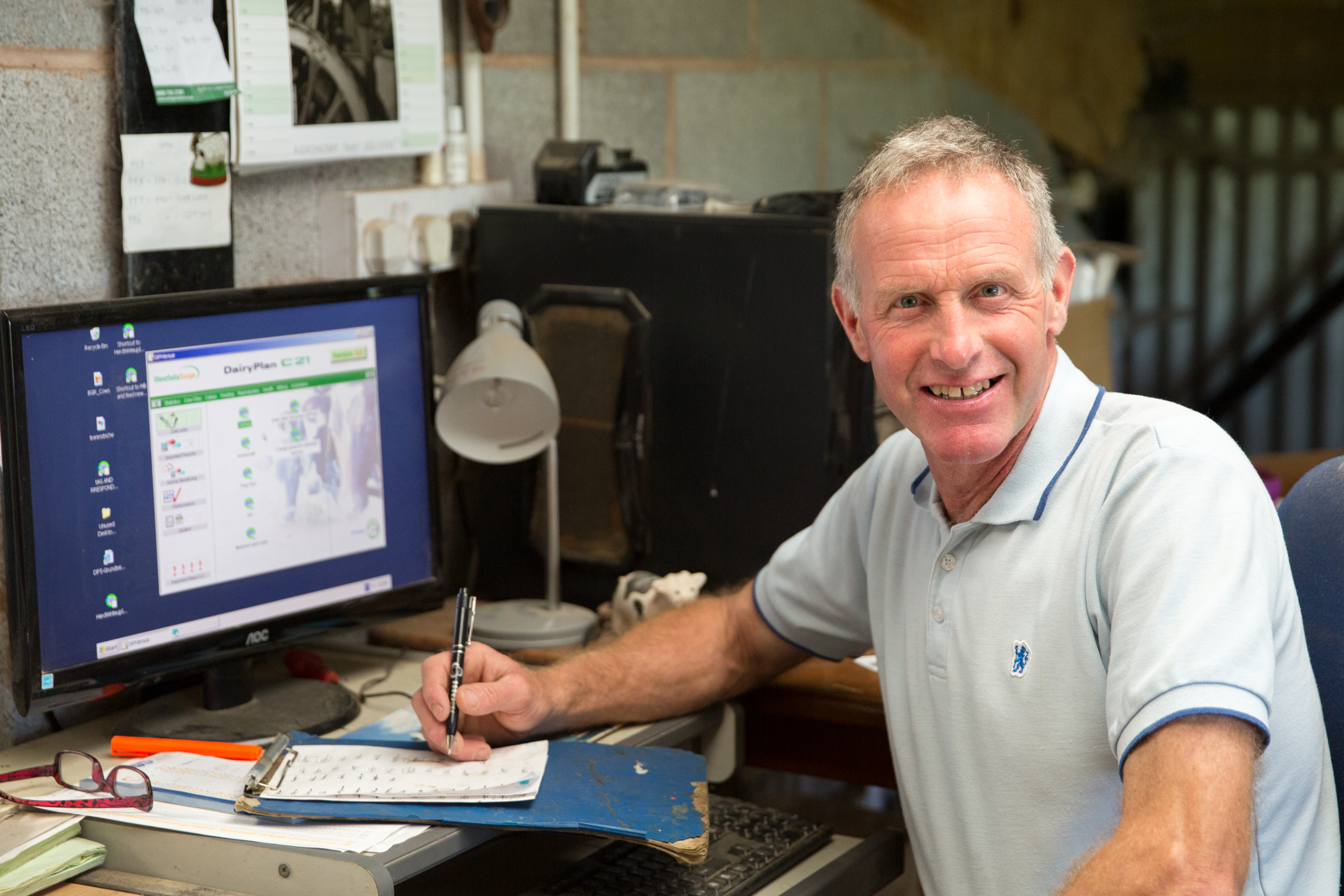- Home
- Spring grazing in autumn calving systems
Spring grazing in autumn calving systems
Arthur Owen is joined by grazing expert, Andre van Barneveld and AHDB's Richard Davies for a closer look at preparing spring grazing for Autumn block calving herds.
Arthur Owen's approach to grazing at Bodysgaw Isa
- Close grass management is allowing Bodysgaw Isa to produce almost half its milk from grazed pasture and forage
- Milk from forage is key to higher profitability for Arthur Owen’s low input system of farming
- Cows are turned out to grass in the first week of February and they graze until the last week in November; to inform the grazing plan, grass measurements are taken weekly with a rising plate meter
- Milk yield per cow is 6,788 litres; maximising grazing and producing good quality silage allows 3,072 litres of this yield to be produced from forage with Arthur aiming to achieve 4,000 litres
- Do not be afraid to bring your cows in again once you have turned them out if its not right
- By grazing it down as early as possible fresh grass comes up and grazed areas always grow quicker than non-grazed
- Measuring the grass weekly enables us to know which fields are best for grazing
- We put our data into Agrinet and get a grass wedge that tells us which fields has the most grass in them
- The main thing for me is a flexible approach - trust what the data tells you and do not do just what you have always done
Learn more about improving grass and forage management
Grazing expert Andre van Barneveld's top grazing tips
- Turn your herds out onto lower grass covers first in the spring, to train cows to graze swards to a 3.5-4cm residual, or 1500kgDM/ha
- Measure the grass and aim to graze the covers that are at 2,300-2,400kg DM/ha first and turn cows out with an appetite to graze
- I always say the first graze is for the grass and the second graze is for the cow
- Under allocate on pasture that have lower grass covers and is green to the base, the cows will willingly graze down to a lower residual
- Bring those cows off after three hours in the first three or four days. Turn them onto the grass, under allocate so they graze down to the right residual, then bring them back in to some feed to make sure they are looked after nutritionally.
- Once they are used to grazing down to the right residual you can then transition to some of the slightly longer covers
- Hit the long covers, those over 3000kgDM/ha, at the beginning of March
- Avoid covers of 3000kg DM/ha or higher at spring turnout
- Have a quick grazing rotation between October 10th and November 25th. This will give you the most grass you can possibly have in the spring. If you graze after that you are making compromises for the spring when the grass is more valuable
- To work out what proportion of the herd diet can be provided by grazed grass use a spring rotation planner, a key tool for allocating grass and managing pasture quality at a time of the year when grass growth is increasing
- If grass cover is only sufficient to provide cows with a small proportion of their diet from grazed grass and the weather is poor you may want to hold back on turn out
- The success of grazed grass in an autumn system is also dependent on how full cows are when they are turned out – if concentrates are used as a ‘safety net’ to protect yield they won’t graze grass to the residual
- Substituting grass with concentrates is your greatest ally in a pasture deficit but in a pasture surplus it is your greatest threat because if cows are too full going into pasture they won’t eat it
- Cows fed 1kg/head of concentrates will consume 0.1kg less pasture. For the second kilogramme they are fed they will take in 0.5kg DM less pasture and the third kilogramme 0.85kg DM less. The trigger point where it become less economic to feed happens quite quickly
Arthur Owen gives a grazing update at Bodysgaw Isa
Find out more about Arthur Owen's story
Compare your performance with Bodysgaw Isa's
Andre van Barneveld explains about making better use of quality pasture in the spring

This project has received funding through the Welsh Government Rural Communities - Rural Development Programme 2014-2020, which is funded by the European Agricultural Fund for Rural Development and the Welsh Government.


